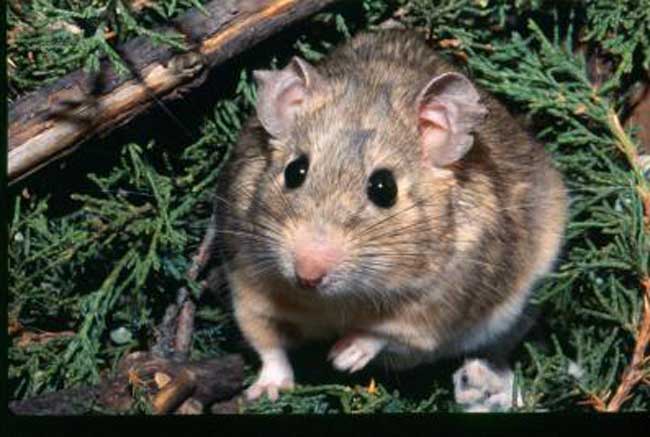How a Desert Rat Feasts on Poisonous Plants

For thousands of years, desert woodrats (Neotoma lepida) of the southwestern United States lived on a diet rich in juniper, despite the plant’s toxic compounds. Then, 18,700 years ago, the region’s climate changed.
In what is now the Mojave Desert, juniper gave way to creosote shrubs, while farther north in the Great Basin it remained plentiful. Creosote shrubs have a completely distinct arsenal of toxins, yet woodrats thrive in both areas today.
How did woodrats in the Mojave adapt to their new staple?
To learn the genetic backstory, Elodie Magnanou and colleagues at the University of Utah in Salt Lake City captured woodrats from the Mojave and the Great Basin, and fed them controlled diets containing either juniper or creosote for several days. Next, the researchers compared messenger RNA extracted from their livers to find out which genes were being expressed there to process food. They used microarrays, molecular tools that can quickly highlight differences in gene expression between individuals of the same species. Innovatively, in this case they used microarrays specific to the common lab rat, Rattus norvegicus, to study the woodrat, a related wild species.
In woodrats on the creosote diet, the team identified twenty-four genes that were much more active in the Mojave group than in the Great Basin group. Those genes make liver enzymes that help to detoxify creosote—allowing Mojave woodrats to prosper on seemingly inedible food.
The findings were detailed in the journal Molecular Ecology.
- Amazing Animal Abilities
- Amazing Things You Didn't Know About Animals
- Freaky Lab Animals
Get the world’s most fascinating discoveries delivered straight to your inbox.


